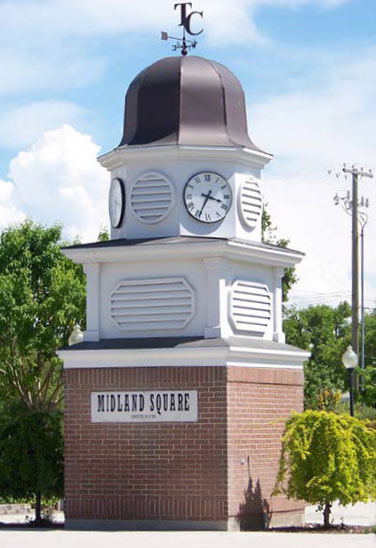Brice Wallace
The Governor’s Office of Economic Opportunity (Go Utah) is using a relatively new grant program to help Utah’s rural communities with economic development efforts.
Fourteen cities and counties recently were awarded grants through the Rural Communities Opportunity Grant program, with $3.95 million slated to be used for business recruitment, development and expansion; workforce training and development; and infrastructure and capital facilities improvements for business development and{mprestriction ids="1,3"} job creation.
“We had a lot of applications for about three times the money that we had, so we had to be pretty discerning,” Brigham Tomco, a member of the Go Utah board, said during a recent board meeting.
“We actually, in many cases, did partial awards so that we could get more money to more of the groups asking. And if we had more money, there were definitely more qualified projects we could have funded.”
Twenty-nine communities applied for the grants, seeking a total of nearly $12 million. Grants are for up to $600,000 and require matching funding based on the recipient community’s population.
Grants were reviewed by a seven-person Rural Opportunities Advisory Committee. The Center for Rural Development, part of Go Utah, administers the RCOG competitive application process.
Examples of approved grants are:
- $599,000 for Hildale, which will use the money to renovate and upgrade the Hildale Economic Advancement and Innovation Center, which will provide small-business owners and entrepreneurs with tools and resources to improve their chances of success. The funds also will be used to buy and install innovative equipment, including economic education and tourism programs, and rapid-assessment response and evaluation.
- $455,000 for Morgan, which will use the grant to take steps to diversify its economy. Morgan City and its Redevelopment Agency have listed specific projects to work on, including creating a visitors center, finishing a caboose attraction next to the train depot, promoting Morgan’s historic district with city signs and building plaques, and other economic development projects.
- $405,720 for Tremonton to support its downtown Midland Square. Grant funds will be used to construct a permanent stage area, additional power pedestals for vendors, and public restrooms as Midland Square is transformed from a public park to a public plaza. The city will program events and activities with the economic objective of attracting new small businesses to Tremonton.
- $400,000 for Vernal to support Cobble Rock Block, a public infrastructure project to boost business development in its downtown. Cobble Rock Block is a key priority and the second public project of the recently approved downtown Vernal plan. The project will feature building a public parking lot, a pedestrian plaza and a walkway behind the 100 East block.
Other communities receiving grants funds are Moab, Price, Bicknell, Hinckley, Vernon, Cedar City, Beaver and Leamington, plus Daggett and Juab counties.
“It was really fun to go through these [applications] because so many of these cities and towns have a lot of need and have limited economies, and we really feel like this program from the legislators are going to be great for development in these cities and counties,” Tomco said.
Carine Clark, the Go Utah board chair, said she wants Go Utah to keep track of the grant program success to show the Legislature its impact.
“I love when the cities have skin in the game and they’re like, ‘Look, we’ve gone to a lot of work to get this; if we could just have a bit more, we could actually pull this off,’ and if we could get them to do that every year, maybe this could really be a much bigger thing,” Clark said.
The RCOG grants are part of rural grant, loan, incentive and opportunity programs streamlined during the 2022 legislative general session. In a prepared statement, Ryan Starks, Go Utah’s executive director, said the RCOG program “empowers rural communities to take stewardship for their economic development planning, projects and activities, and to manage unique opportunities.”
Starks told the Go Utah board that that in the past, rural communities would come to Salt Lake City if they needed state help.
“What we’re trying to do is now say, ‘Hey, rather than the state tell you, rural Utah, what you need, how about you tell us what you need and then we will find ways to help fund those programs?’” Starks told the board.
Go Utah also has hired a team of rural outreach managers for different parts of the state, and they are working with associations of counties. “Now, those are the people talking with mayors, commissioners, chambers of commerce and businesses, connecting all the dots,” Starks said.
Eligible grant communities include counties of the third, fourth, fifth and sixth class; cities, towns and metro townships located within those counties; and municipalities with populations of 10,000 or less in counties of the second class.
Applications are scored based on their quality, proposed budget and economic development projects activities descriptions, as well as the purposes, goals and measurable outcomes related to improving the community’s overall economy. Applicants must justify the economic development need for the grant and the amount of funding requested.{/mprestriction}








